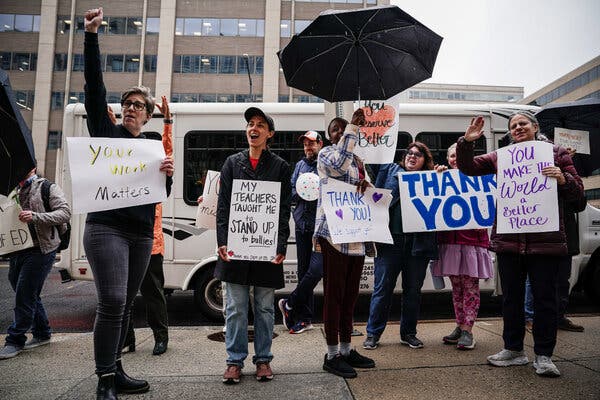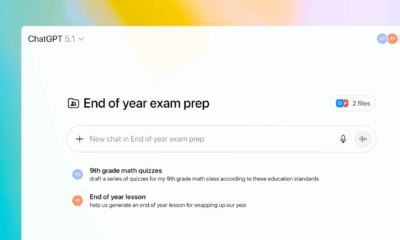Education
Education Politics Heat Up as Trump Administration Proposes Cuts

The landscape of education in the United States is shifting as the Trump administration proposes significant changes that could impact thousands of jobs and the future of K-12 education funding. Recently, reports indicate that the administration is considering the dismissal of over 1,000 workers at the Department of Education. This comes alongside a Republican domestic policy bill that includes a tax credit aimed at expanding access to private school vouchers, raising questions about the future of public education.
Dana Goldstein, an education reporter for The New York Times, has covered this evolving story for nearly 20 years. In a recent interview with Times Insider, she emphasized the increasing prominence of politics in education reporting this year. “There are years where politics emerge as a bigger story line. And I just think there’s no avoiding that this is one of those years,” Goldstein noted.
The Department of Education primarily allocates its budget to federal student grants and loans, which support college education. In contrast, the federal role in K-12 funding is relatively minor, comprising approximately 10 percent of total funding for K-12 education nationwide. States retain the authority to set curriculum standards and determine how standardized testing is administered, leading to a landscape where many controversial education issues are decided at the state and local levels.
The recent political developments underscore the potential for significant changes in how education is managed and funded across the country. As the Trump administration continues to pursue its objectives, the implications for students, teachers, and schools will likely become clearer in the coming months.
Goldstein’s insights reflect a growing concern among educators and advocates about the potential ramifications of these political maneuvers. The emphasis on private school vouchers, for instance, could shift resources away from public schools, exacerbating existing disparities in educational access.
The ongoing dialogue surrounding education policy highlights the critical intersection of politics and pedagogy. As decisions are made at the federal and state levels, the landscape of K-12 education remains a focal point of national debate, shaping the future for millions of students across the United States.
In this charged environment, the role of journalists like Goldstein is vital, providing essential coverage that informs the public and holds policymakers accountable. The challenges ahead will require careful attention from all stakeholders involved in the education sector.
-

 Technology4 months ago
Technology4 months agoDiscover the Top 10 Calorie Counting Apps of 2025
-

 Health2 months ago
Health2 months agoBella Hadid Shares Health Update After Treatment for Lyme Disease
-

 Health3 months ago
Health3 months agoErin Bates Shares Recovery Update Following Sepsis Complications
-

 Technology3 weeks ago
Technology3 weeks agoDiscover 2025’s Top GPUs for Exceptional 4K Gaming Performance
-

 Technology2 months ago
Technology2 months agoElectric Moto Influencer Surronster Arrested in Tijuana
-

 Technology4 months ago
Technology4 months agoDiscover How to Reverse Image Search Using ChatGPT Effortlessly
-

 Technology4 months ago
Technology4 months agoMeta Initiates $60B AI Data Center Expansion, Starting in Ohio
-

 Technology4 months ago
Technology4 months agoRecovering a Suspended TikTok Account: A Step-by-Step Guide
-

 Health4 months ago
Health4 months agoTested: Rab Firewall Mountain Jacket Survives Harsh Conditions
-

 Lifestyle4 months ago
Lifestyle4 months agoBelton Family Reunites After Daughter Survives Hill Country Floods
-

 Technology3 months ago
Technology3 months agoUncovering the Top Five Most Challenging Motorcycles to Ride
-

 Technology4 weeks ago
Technology4 weeks agoDiscover the Best Wireless Earbuds for Every Lifestyle





















